In my last post I described how the Jacobites captured Fort George at Inverness in February 1746. They then moved south to besiege Fort Augustus, which was at the southern end of Loch Ness. This was a “modern” Vauban style fortress, with four bastions, but it suffered from a couple of fundamental flaws in its design. Here is an old print of it.

The first problem was that no-one had ever considered it being attacked with artillery, so the barrack blocks had been incorporated into the curtain walls, which made them very weak. The second problem was the unusual cone shaped towers in the centre of each bastion. These were storehouses, including the main ammunition store, and their shape and position made them extremely good targets.
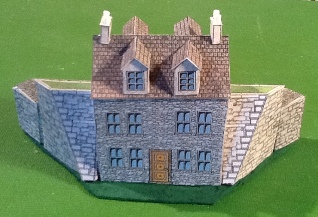
To model Fort Augustus I used four of my standard PaperTerrain Vauban Fortress bastions. However, rather than join these together with curtain wall sections, I made new sections which incorporated barrack blocks.
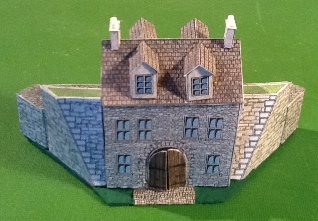
One of the sections I made with a gateway. The gates are hinged so that they can be open or closed.

I thought about making all of the sections with a ruined building underneath, but instead just made one ruined section, as I have done for other fort wall sections.
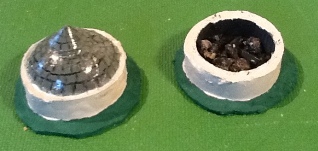
I also modelled the cone shaped storehouses to place on the centre of the bastions. These are made from half of a tennis table ball, with a card cone on top and a card wall filled with Polyfilla around the base. I also made a ruined storehouse.
Here is the completed model of Fort Augustus.

It was garrisoned by three companies of the 6th Foot, commanded by Major Wentworth of that same Regiment, plus a few invalid Royal Artillerymen. I am representing this as six infantrymen, two gunners and a commander. One of the companies was placed in an older fort (out of view to the left of the picture), called Kiliwhimen Barracks, which was virtually identical to Ruthven Barracks, which I had previously modelled here.
The Jacobite Force was commanded by Colonel Stapleton of the French Irish Brigade. His force comprised the Irish Piquets, Royal Ecossais, MacDonald of Glengarry’s Regiment, MacDonald of Keppoch’s Regiment and Cameron of Locheil’s Regiment. Their artillery was commanded by Colonel Grante and comprised 2 x French 8 pounders, 2 x British 6 pounders, 4 x French 4 pounders, 2 x Royal Mortars and 2 x Coehorn Mortars. The 8 and 4 pounders had been brought by French ships to Montrose, the British 6 pounders were either captured at Falkirk or were from Fort George. The mortars were those captured at PrestonPans.
When the Jacobites arrived at the end of February 1746, the Irish Pickets rapidly took Kiliwhimen Barracks, and the company of 6th Foot hastily joined the rest of the garrison of Fort Augustus. You can see my model of Kiliwhimen Barracks, now occupied by the Irish Pickets to the top left of this picture.
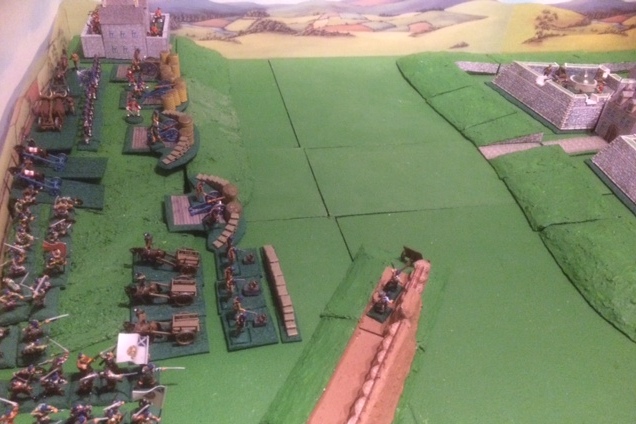
The Jacobites positioned their artillery on a low hill facing the Fort, supported by their infantry, and began to bombard the Fort. Colonel Grante also ordered some of the troops to start digging saps forward, so that he could move his guns closer to the Fort, a very conventional siege technique.
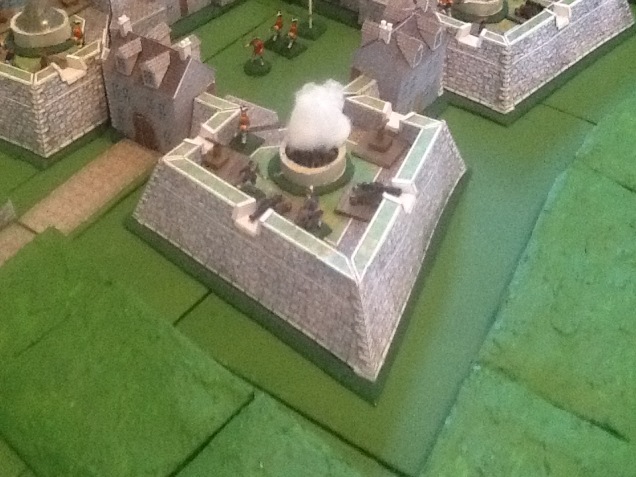
However, the fire from the mortar battery was very effective, and hit one of the cone shaped storehouses, which happened to contain the Fort’s ammunition supply, This promptly exploded. Major Wentworth surrendered the Fort on 5th March. The Duke of Cumberland was very unhappy at this as he considered that the Fort could still have held out, so Major Wentworth was later court martialled and cashiered (dismissed from the Army). The Fort was of course named after Cumberland whose full names were William Augustus.
The Jacobites then moved on further south to besiege the third of the Forts down the “Great Glen”, Fort William.
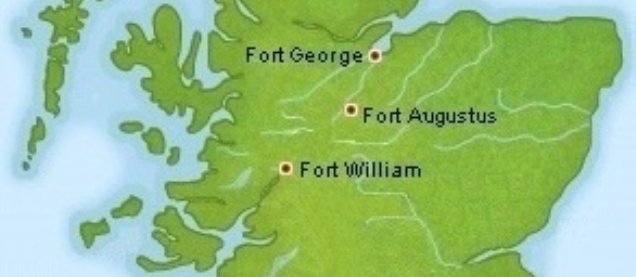
I will cover this in my next post.
Brilliant model – a side of the rebellion a lot of people are not aware of. Thankyou
LikeLike
Hi Graham,
Glad you liked it. I enjoy researching the unusual minor actions of the rebellion.
Best wishes, Rod
LikeLike